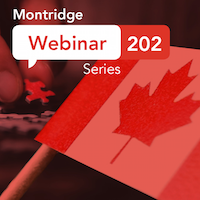In a previous blog post, we referenced a Healthcare of Ontario Pension Plan by Abacus Data survey. The main takeaway is that a secure retirement remains of greater concern for Canadians than concerns about their health, debt load, and job security. Also, employees want their employers to help lead the way and help with retirement planning.
Similarly, for employers who are offering savings and investment tools to their employees, they recognize that retirement plans are well received and are integral to their employees’ financial and mental wellbeing.
This concept of employers leading the way was far more common in the past. Thirty to forty years ago, retirement decisions were often facilitated by employers on behalf of their employees. Individuals often worked for very few companies, with many staying in one place for the entirety of their career. In this environment, employees also had a good idea of their retirement date based on their years of service and internal company policy. Perhaps more importantly to the worker, they knew exactly how much income they would be getting in retirement thanks to their company-provided defined benefit pension plan.
Unfortunately, it’s not as simple today. Decisions about retirement funding are often left entirely to individual employees in many cases, even in situations where an employer provides a savings plan. Outside of the public sector, the defined benefit pension plans of yesterday have all but disappeared from the private sector.
And just to add another layer of complexity, Canadians now have more ways of saving than ever before, such as RRSPs, TFSAs, non-registered accounts, insurance policies, real estate, etc. How do you determine which options make the most sense and what to prioritize? It can be so overwhelming that employees feel unable to begin.
Even when options are whittled down, it's easy to get off-track on the path to savings. So, here are a few of the more common mistakes that employees should be aware of, and how to avoid them. Feel free to share these pointers with your staff.
You are not taking advantage of your company provided retirement plan
Most employer sponsored retirement plans are voluntary, with the decision to participate being left entirely to the employee. The mistake here is overlooking the matching contribution employers are making on your behalf. Remember, any employer-made contribution is free money and comes with a 100% rate of return on what you have already invested.
Most service providers also provide tools and resources to assist plan members. Many of these resources are intended to promote financial wellness and literacy. Using these tools usually translates to increased success and puts somebody in a better position to meet their savings objectives. Want to know how much savings are needed by age 65 in order to generate $50,000 a year in retirement income? There’s a retirement calculator to help answer that. Not sure if you’re on track by the time you reach age 40? There are planning tools that will provide immediate feedback and provide realistic options to get you where you need to be.

You are not paying yourself first
An additional benefit of a company-provided savings plan is that contributions typically get deducted directly from payroll. This means the money will be allocated to the chosen savings vehicle choice before it even touches a personal bank account.
Use this mindset when it comes to saving outside of an employer’s payroll system too. Set up pre-authorized debits that coincide with payroll deposit dates. Determine amounts that will help you achieve your savings goals while also fitting your current budget and cash flow needs. Saving before being given a chance to spend it on something else is exactly what it means to pay yourself first. This type of automated contribution also makes it easier to maintain a consistent savings habit.
Expecting the government to look after you
Living in Canada, we are fortunate to have basic government programs to help us in retirement such as the Canada Pension Plan (CPP), Old Age Security (OAS), and the Guaranteed Income Supplement (GIS) depending on which of the programs you are eligible for. Just don’t expect these government programs to provide all of the income needed to fund your retirement. Even with the enhancements being made with the CPP program, it’s not going to be enough for most Canadians to maintain a similar standard of living that they were accustomed to while working. Consider these government programs more supplemental in nature, enhancing savings that you were able to make through your company or on your own during your career years.
Expecting to win the lottery
Dare to dream, as they say. Just do not count on this retirement strategy to come through as the odds are simply not in favour of making this a realistic option. And yet as of 2014, one third of Canadians still plan on winning the lottery to retire. As the article says, and which we are 100% in agreement with, “A much better bet would be to develop a personal retirement savings and investing plan and to start contributing as early and as often as possible to your RRSP.”

Not having an estate plan or assigning beneficiaries
Wills. Power of Attorney. Estate and probate taxes. A lot of variables go into an estate plan, so be sure to work with a professional for their expertise in this area. You need to set up a plan that is best suited to your individual situation and ensures your loved ones are taken care of.
At the very least, review your savings accounts and insurance polices and ensure that you have designated the right beneficiary until you can meet with a legal professional. Don’t erode your accumulated wealth you intend to pass on to loved ones because of neglected or improper estate and tax planning strategies.
Final Thoughts
These are some of the more common mistakes to avoid when trying to get the most out of your savings plan. Strategizing and implementing your savings strategy is always the first step to success. Revisiting and retooling it periodically on the way will only increase the probability of success over time.








